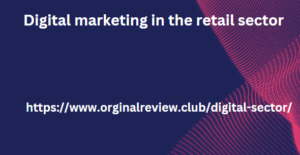Imagine receiving a call from an unknown number. The caller ID displays a phone number, but the only information you have is the area code. Can you pinpoint the state where the call originated? Unfortunately, it’s not as simple as it seems. While area codes traditionally offered a geographical link, the rise of mobile phone portability and vanity numbers has blurred the lines.
This article delves into the world of area codes and explores the challenges of identifying a phone number’s state of origin.
Area Codes: A Historical Lens
In the past, area codes served a clear purpose: identifying the geographical location associated with a phone number. Established in the 1940s by the North American Numbering Plan (NANP), each area code corresponded to a specific region within the United States, Canada, and parts of the Caribbean. This system allowed for efficient routing of calls and simplified identification of a caller’s general location.
For instance, if you saw a 212 area code, you Digital marketing in the retail sector could reasonably guess the call originated from New York City. Similarly, a 312 area code pointed towards Chicago.
The Rise of Mobile Phone Portability
The landscape began to shift with the introduction of mobile phones. Unlike landlines that were tied to a specific location, mobile numbers could be Calling India Made Easy transferred, or “ported,” to different areas. This meant an area code no longer guaranteed the phone’s physical location. Someone with a 212 area code could be calling from California, having ported their New York number.
Vanity Numbers: Adding Another Layer of Complexity
Vanity numbers, phone numbers with memorable sequences like 1-800-FLOWERS, further complicate the identification process. These numbers are often purchased by businesses and can be assigned to any location, regardless of the traditional area code association.
For example, a company might acquire a vanity number with a 305 area code (Miami, Florida) to project a sunny image, even if their headquarters are located in Seattle, Washington.
So, Can You Identify the State by the Code?
Unfortunately, with mobile phone portability and vanity numbers, identifying a phone number’s state solely based on the area code is no longer reliable. Here’s what you can do:
- Reverse Phone Number Lookup Services: Several online services allow you to enter a phone number and receive information about the caller, including their potential location (city and state, though accuracy may vary). However, these services often require a subscription fee.
- Search Engines: Sometimes, a simple Google search with the phone number can reveal clues about the caller’s location, especially if it’s a business number.
- Context Matters: Consider the context of the call. If you received a call about a job application you submitted to a company in California, a phone number with a California area code is more likely.
Beyond Area Codes: Identifying Scam Calls
While pinpointing the state might be challenging, you can use other red flags to identify potential scam calls. Here are some tips:
- Unfamiliar Numbers: Be wary of calls from unknown numbers, especially those with unfamiliar area codes.
- Urgent Requests: Scammers often create a sense of urgency to pressure you into making a rash decision.
- Financial Information Requests: Legitimate businesses won’t ask for sensitive information like bank account details or social security numbers over the phone.
- Robo-Calls: Automated calls with pre-recorded messages are often scams. Don’t engage with them.
If you suspect a scam call, hang up and report it to the Federal Trade Commission (FTC).
Conclusion
Area codes, once a reliable indicator of a phone number’s state, are no longer foolproof. While identifying the exact state might be difficult, consider the context of the call and be cautious of red flags to protect yourself from potential scams. Remember, a little awareness goes a long way in navigating the ever-evolving world of phone numbers.
